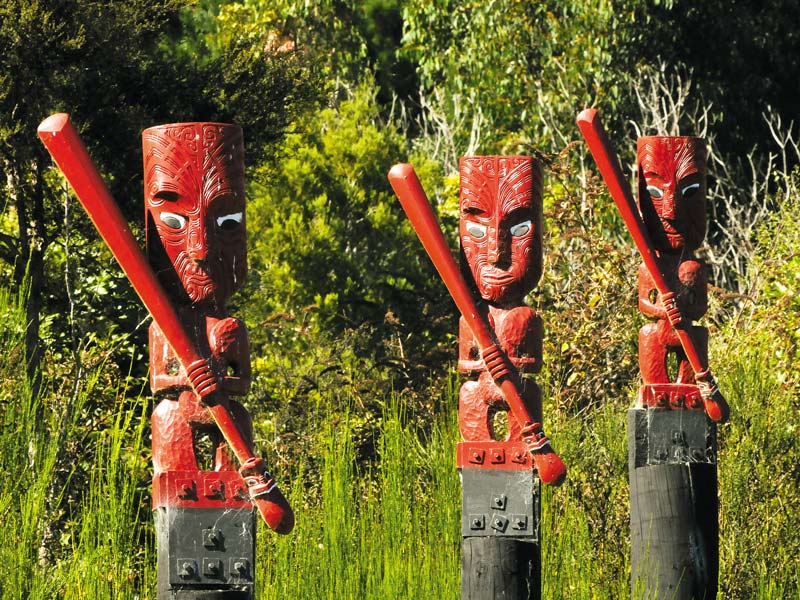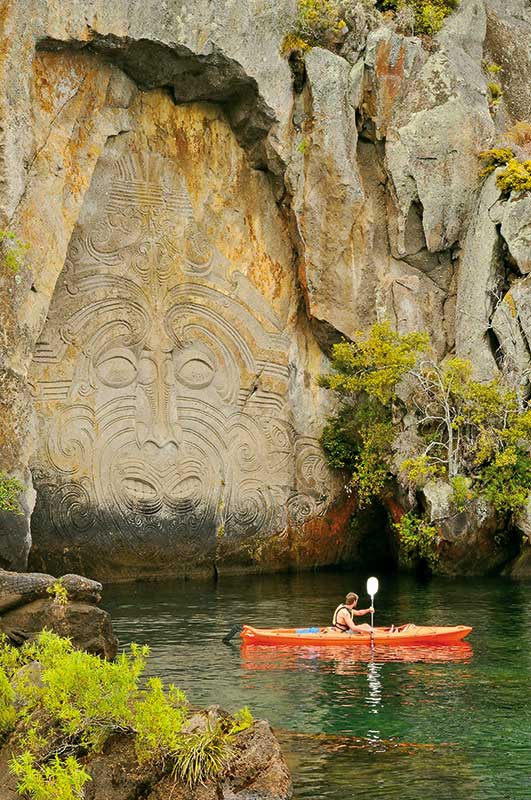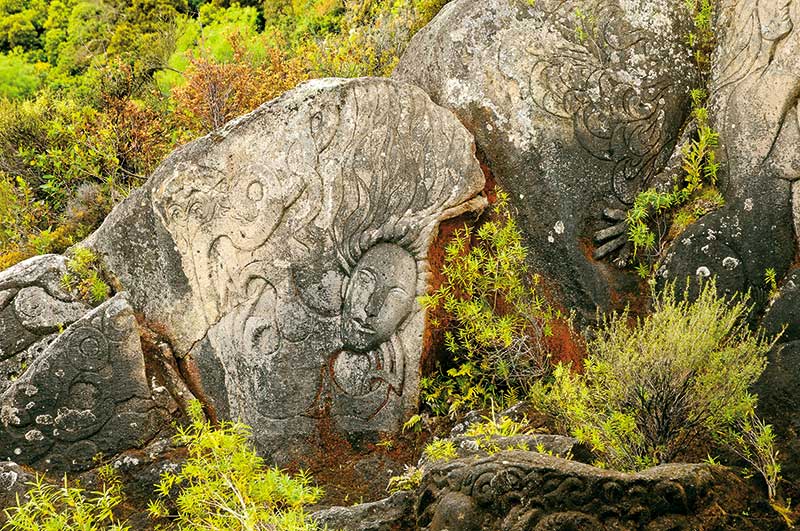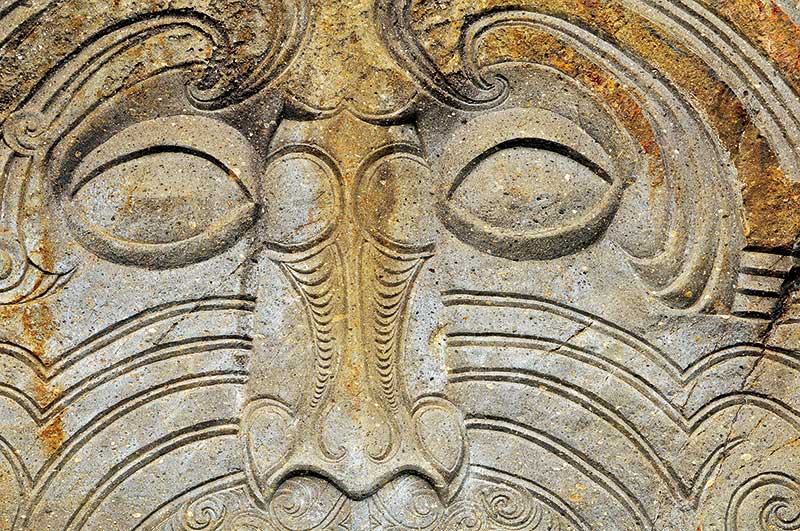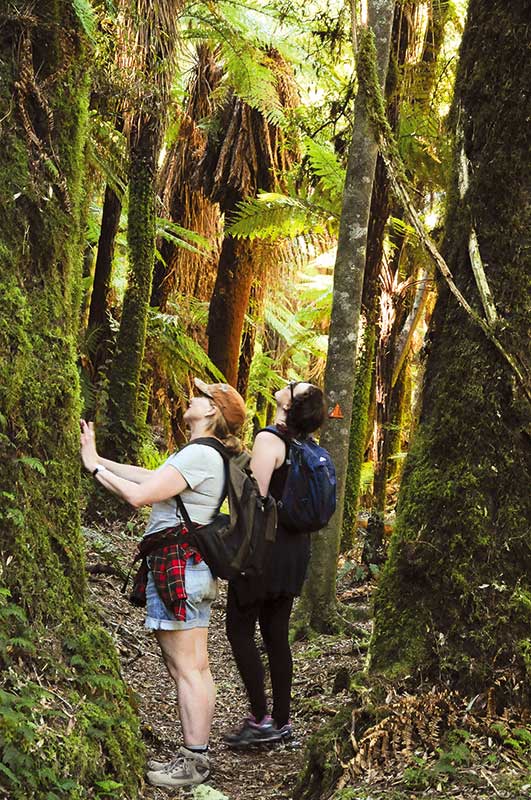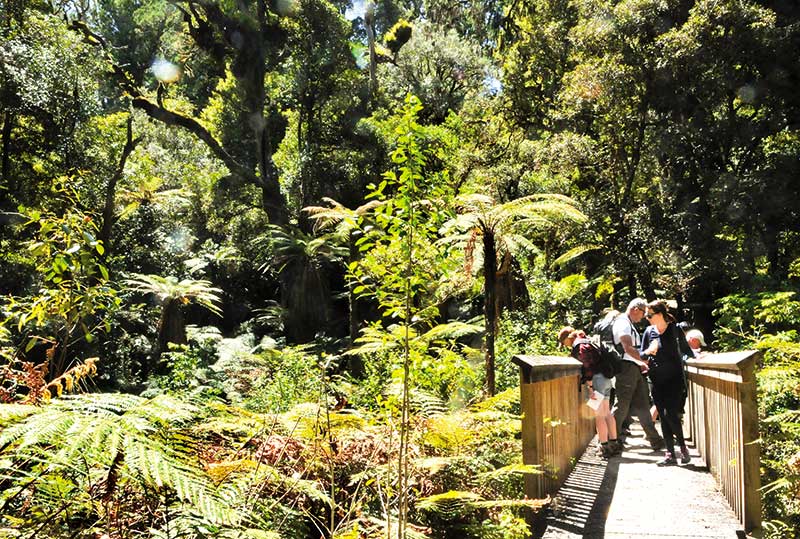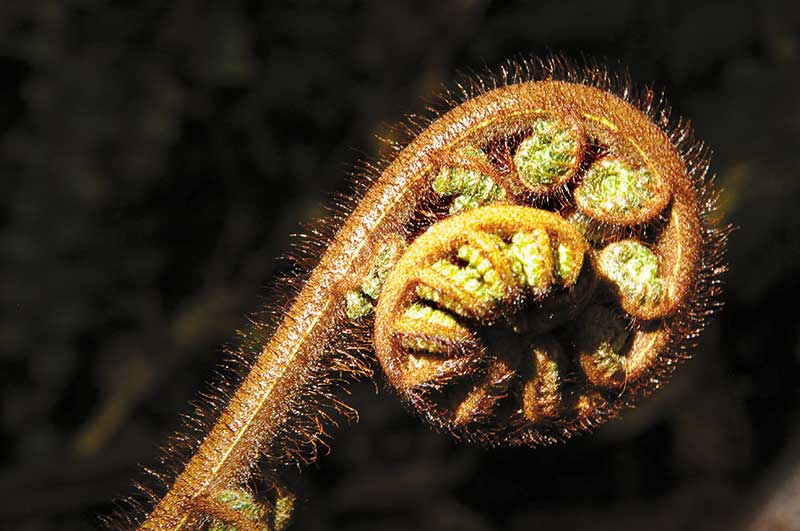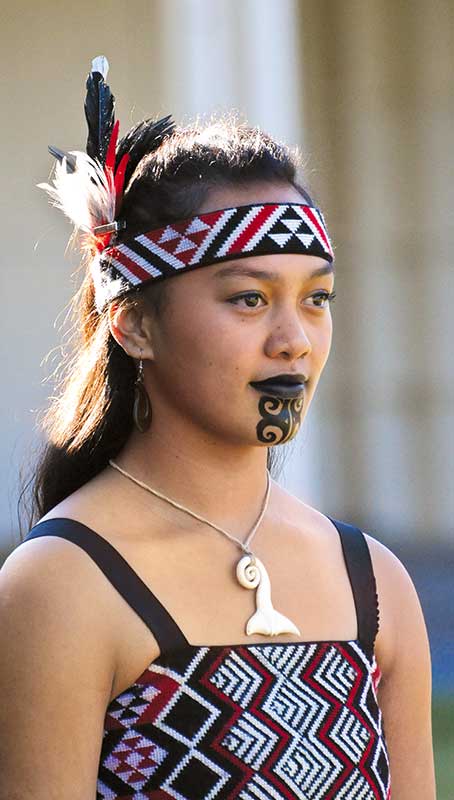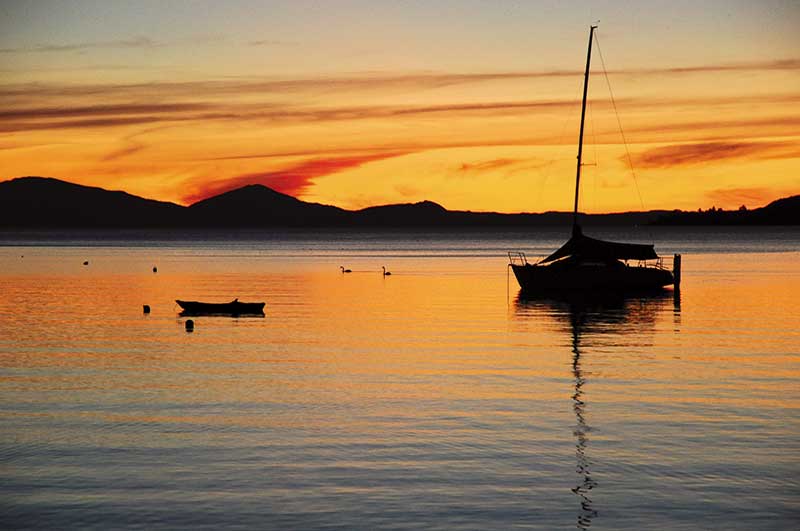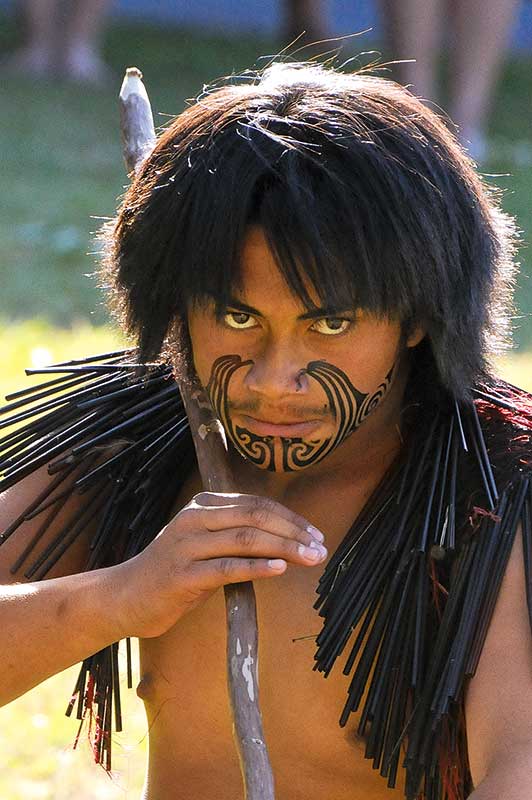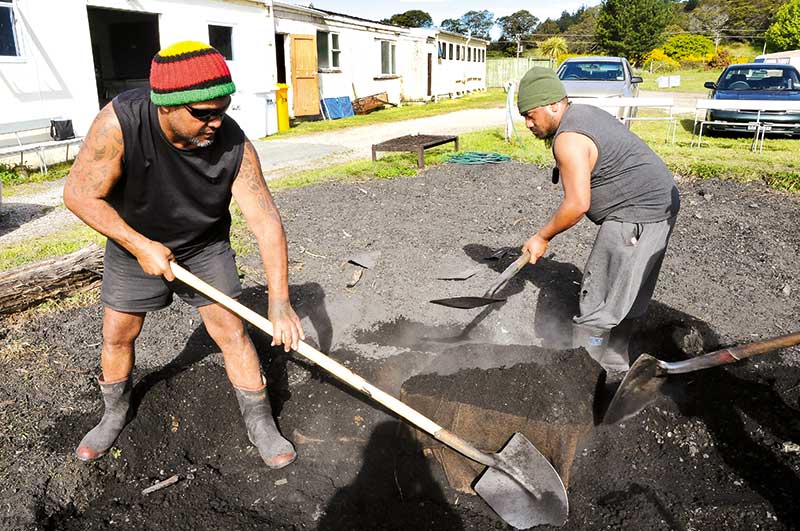Whirinaki Te Pua-a-Tane Conservation Park
Whirinaki Te Pua-a-Tane Conservation Park is 60,000 hectares – the size of Lake Taupo, or Singapore – and is relatively small for a rainforest. But it’s the finest of New Zealand’s podocarp rainforests and is of international significance for its biodiversity.
It’s an ecological hot spot with a huge diversity of plant, insect and bird species and ecologists, botanists and bird-fanciers from around the world revere this place which is, ironically, not on the must-visit list for many New Zealanders.
Himiona Nuku, our Rainforest Experiences guide, is from this area, as are his ancestors, and his input, along with that of Naphtali Blackler, a trainee guide, make this much more than just a forest walk. It’s a unique cultural and ecological experience.
We are told stories of how Maori of the Whirinaki survived in pre-supermarket, pre-pharmacy days, using the products of the forest for medicine, food, housing and fuel. This rainforest, and knowing it, was all that was required to sustain their lives even in the cold, wet winters.
I’m an amateur birder and am happy to see miromiro (tomtit), kaka screeching high in the canopy, tui, whio (the endangered blue duck), and kereru, the big fat wood pigeon. We hear – also endangered – North Island parrots but don’t see them, and brown kiwi are often heard at night.
Our small group does the waterfall walk which, in theory, is only four hours long but we drag it out, stopping to admire trees and ferns and to spot birds. The guides have hauled in the makings of tea and coffee and we each have a couple of gourmet sandwiches provided by Rainforest Experiences. Yum. Sandwiches are followed by chocolate bars.
The walk is 10 kilometres, not so far, but at the end of it I’m pleasantly tired and foot-sore. And looking forward to a hearty dinner, knowing I have walked-up a calorie deficit.
Rose on Roberts
Back in Taupo we go to Rose on Roberts, a restaurant with an acclaimed head chef, Ariki Hamilton. It’s funky, choosing Maori-themed food in an English Tudor-style restaurant. The food is fantastic, the prices reasonable and the deserts are heavenly.
The menu changes but you can bet it’s fresh and there is a discreet Maori input. Creamed paua entre, perhaps, pork and puha like you have never tasted them, slow-cooked pork belly with kumara puree, and venison done different ways.
Seafood is big and, depending on the day, Roberts on Rose offers John Dory, moki or gurnard cooked perfectly and, if you have been fishing, and are skilled enough to have caught a Taupo trout, he will cook it for you.
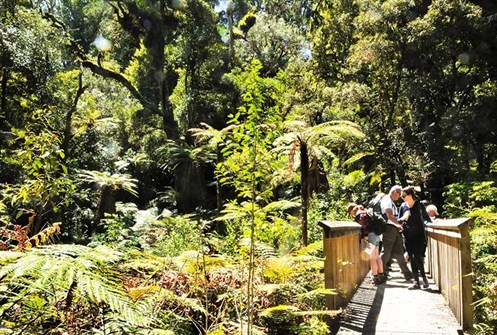
Chris Jolly Lake Taupo boat cruise
On this sunny Sunday morning, Lake Taupo is perfectly still and the mountains in the background have a healthy covering of snow. It’s a fine day for a boat ride so we go on a Chris Jolly boat cruise for a couple of hours.
Following the Maori theme of the weekend, the real purpose of the boat trip, to me, is to see the Maori carvings on the rocks at Mine Bay. And these are only accessible by boat.
The main carving, 10 metres high on a cliff, is a face, that of Ngatoroirangi, an ancestor from whom the Ngati Tuwharetoa trace their lineage. Ngatoroirangi was quite a guy; a visionary, a high priest and the navigator of the Te Arawa canoe which he piloted from Hawaiki to New Zealand during the great migration of the 13th century.
On the rocks surrounding the giant face there are other carvings including two tuatara, which are the guardians of the lake, as well as two figures of women in a Celtic design.
The carvings were the creation of master carver Matahi Whakataka-Brightwell and Jonathan Randall. They took four summers to complete. It is 40 years this year since the beginning of the project. It will still be there in 400 years and is something well worth making the effort to see.
Maori Xperience, Taupo
Our final date for the weekend is with Maori Xperience – a new venture started by Ngahere Wall with the help of his sister Aroha, and others from the Pakira Marae.
The Pakira Marae is 11 kilometres south of Taupo. It’s not far from the highway and I remember, as a child, seeing the marae and village that rambled around it, beside the lake, with the mountains behind. It looked, and still does, beautiful and mysterious, and very tangata-whenua.
The hangi pit is enormous and in it, on big iwi celebrations, food for 500 can be cooked. Just a corner of it is fired-up today. The ingredients are laid out, buffet-style (potato, kumara, cabbage, watercress and meats) so we pick what we want, put it in a foil container, attach a cardboard lid, and write our names on the lid. The containers are put in a basket, surrounded by damp sacks, and covered in embers and hot rocks. And then we go trout fishing.
Ngahere has been fishing in the Waitahanui River, behind the village, since he can remember. It’s impressive to watch him cast the line, a gossamer thread dancing over silver water. We can see the trout, a shadow pointing into the current. It sees the fly too, and moves towards it. But it’s too old and smart to get caught by an imitation insect.
Back at the marae there is a table in the shade of a tree, the rhythmical swish of Taupo’s baby waves, a tui singing and low sun glinting on the mountains. The hangi is perfectly cooked.

